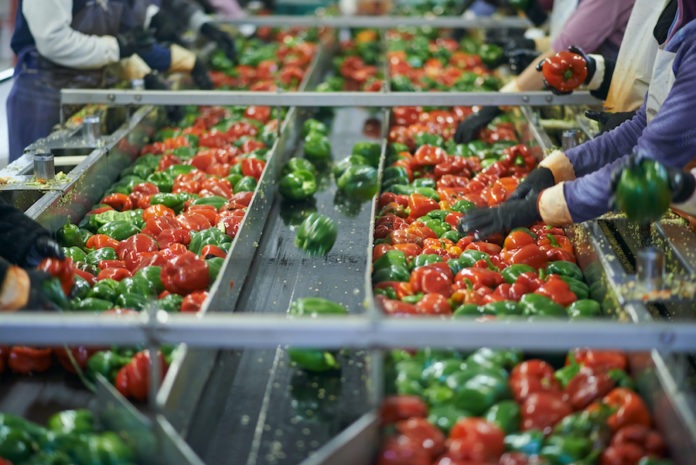
By Jacalyn Whitney, Application Sales Engineer at Vaisala
The food and beverage (F&B) industry is changing rapidly. Between the growing need for sustainable, high-quality food, increased demand for better meat and milk alternatives, ever-evolving quality assurance regulations, and elevated levels of competition, manufacturers must take on many unique and evolving challenges.
The truth is that the ability to make decisions that meet constantly shifting needs while encouraging ongoing innovation is impossible without accurate and reliable data. By reliably measuring critical parameters impacting the quality, flavor, safety, and nutritional value of food and beverages, manufacturers can make the best data-driven decisions to help optimize food production. Whether formulating new products, streamlining processes, protecting product safety, ensuring quality and consistency, or optimizing sustainability, more informed decision-making is the industry’s key to transition toward a more efficient and streamlined future.
Food and beverage industry challenges
When it comes to industry challenges, food and water scarcity is, of course, a huge concern. This issue is exacerbated by the rapidly growing urban areas placing increased pressure on sustainable food production and neighboring water resources. Worse yet, many perishable products have limited shelf lives, making the sector particularly vulnerable to supply chain interruptions. Additionally, with consumers progressively demanding safer, healthier, more nutritious food, the pressure on manufacturers to provide better labeling information is escalating — especially for ingredients with health considerations.
The good news is that innovative food and beverage (F&B) industry measurement technologies are available to help address these challenges. Accurate, reliable data is essential at every stage of the F&B lifecycle — from production to storage and distribution to retail and waste management — in helping to improve safety, quality, consistency, energy efficiency, and sustainability. To make this possible, it is essential to tap into these technologies to ensure products can withstand a long shelf life, ensure transportation and storage, and of course, still taste good.
Optimizing food & beverage processing and production
Whether the goal is optimizing energy efficiency and operating conditions and costs, improving product quality, or decreasing equipment corrosion, food processors can realize significant benefits by leveraging science-based measurement instruments for various parameters, such as carbon dioxide, relative humidity, and in-line Brix concentration, to name a few.
Carbon dioxide measurements
Carbon dioxide (CO2) measurements can be taken and utilized at every step of the value chain — from primary production to processing to retail storage — to help keep employees safe and goods fresh. From greenhouses and fruit/vegetable storage to supermarkets, refrigerator leaks, and cold storage monitoring, CO2 has a variety of common F&B industry applications.
For example, since CO2 can aid plant growth, horticulturists often need to measure greenhouse CO2 levels to boost production. Real-time CO2 measurements are also used in producing carbonated beverages and in the facilities where perishable foods are manufactured.
The gas, however, can be a significant safety hazard, so monitoring it is essential to avoid accumulation.
Relative humidity measurements
Accurate and reliable relative humidity measurements are essential in streamlining the drying processes.
Drying plays a critical role in global food production and processing applications, such as greenhouses and storage spaces, as well as warehouses, fluid beds, spray driers, baking ovens, and retail locations. Removing moisture to a safe level can extend a product’s shelf life by preventing microbial growth and minimizing biochemical reactions caused by moisture. Additionally, proper drying can reduce packaging, storage, and transportation costs. As such, employing accurate humidity measurement devices enables decision makers across the F&B sector to find the balance between product safety, input volume, and energy usage while maintaining and enhancing product quality.
In-line Brix concentration measurements
Decision makers can also utilize in-line Brix concentration measurements to automate and improve product quality control. By allowing for real-time, continuous, automated process control, in-line Brix and dry solid monitoring helps manufacturers optimize production.
In traditional process and product quality control, it is necessary to collect samples manually before they can be analyzed in a laboratory. This creates an expensive and time-consuming process that prolongs the critical decision-making process since authorities must await a verified result from the lab.
Unlike time-consuming and laborious laboratory sampling, which poses a risk of product contamination, in-line measurement of Brix concentration improves process and product quality control by delivering real-time, continuous monitoring intelligence. The result is increased production efficiency, reduced waste, enhanced energy efficiency, and optimized operations. Accurately measuring critical F&B industry parameters makes it possible to use that information to improve productivity, streamline efficiencies, and enhance how our food will be produced and processed.
Measurements during transportation and storage to ensure quality and freshness
Once the food is ready, optimal storage and transportation conditions can ensure that food stays fresher for longer. Transportation and storage conditions significantly influence the shelf life of produce, its freshness, taste, and safety for consumption, underscoring the importance of accurate measurements.
Whether in storage facilities, ripening rooms, freezers, refrigerators, vehicles, retail outlets, or anywhere in between, CO2 must be precisely monitored. Making measurements and adjustments to maintain proper CO2 levels in storage facilities or during transportation can increase safety; improve energy efficiency, productivity, and product quality; and prevent machinery damage.
Humidity and temperature are other essential variables to monitor when creating and maintaining the most favorable transportation and storage conditions. Measuring humidity, dew point, and moisture with accuracy can help reduce frost buildup and condensation and improve energy efficiency by reducing unnecessary heating and defrosting while drivers transport and employees store products.
CO2 refrigerant monitoring and CO2 monitoring in cold storage applications are also critical in verifying optimal storage and safety environments. The ability to accurately monitor temperature, humidity, and CO2 and adjust those parameters empowers F&B industry decision makers to help ensure proper food storage; timely ripening of fruits, vegetables, and seasonal foods for consumers in different destinations; and safe working conditions for storage and production personnel.
Leveraging data to realize a circular F&B economy
Even the most optimized production processes create byproducts that can be recycled, upcycled, and even reused. Scientifically driven measurements can help enable a genuinely circular F&B economy from waste to value.
Greenhouses and livestock produce waste that can be turned into biogas, an organic fuel that can power farms, greenhouses, and animal shelters. Plus, the byproducts of anaerobic digestion, which converts waste into biogas, can be used as an all-natural, nutrient-rich fertilizer.
Whether producing biogas or upgrading waste to biomethane, instruments that can simultaneously measure methane, CO2, and humidity eliminate inefficiencies. Biogas production is an inconsistent organic process, which means the better the entire process is monitored, the more quickly and easily decision makers can react to any inconsistencies and increase biogas production efficiency. Consequently, biogas measurement tools are streamlining the process of converting raw biogas to fuel-grade biomethane and ultimately transforming how green energy is produced and used.
Food and beverage productions should be more science than art
In the end, scientifically advanced measurement solutions can be utilized at every stage of the F&B industry value chain, from processing, storage, and distribution to retail and waste management.
Data-driven decisions enable better management of different processes across the food and beverage ecosystem, which not only improves efficiencies and product consistency and quality but also reduces energy consumption and waste, lowers costs, and improves the industry’s overall sustainability. F&B measurement technology is key to increasing production and resource efficiency, improving yields, and producing food in a smarter, more precise, and more efficient way.
Thanks to scientifically driven measurement technologies, the future of smarter, more sustainable food production, transport, and delivery has already arrived.
 Jacalyn Whitney is an Application Sales Engineer with Vaisala with four years of industry experience. She has been with Vaisala since April 2022 and worked for Vacuum Barrier Corporation for over three years prior to joining Vaisala. She holds a bachelor’s degree in mechanical engineering with a concentration in Manufacturing and Industrial Design with a minor in Mathematics from Merrimack College in Massachusetts.
Jacalyn Whitney is an Application Sales Engineer with Vaisala with four years of industry experience. She has been with Vaisala since April 2022 and worked for Vacuum Barrier Corporation for over three years prior to joining Vaisala. She holds a bachelor’s degree in mechanical engineering with a concentration in Manufacturing and Industrial Design with a minor in Mathematics from Merrimack College in Massachusetts.








